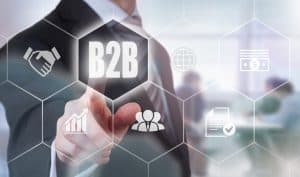
To gain the full benefits of Servitization, a.k.a. subscription models, B2B organizations should let their customers call the plays.
The era of one-time, lumpsum transaction models is coming to an end. Servitization, or subscription-based models, are now becoming a priority for forward-looking enterprises. This isn’t a new model – telecommunications, internet, and media streaming providers have built consumer businesses centered around the popular premise of subscriptions for decades. However, digital advancements and changing customer preferences are driving a shift towards servitization for enterprise technology.
The subscription model first made its way into this space with cloud providers and is now revolutionizing how B2B businesses are evaluating revenue generation. From a business perspective, subscriptions allow for improved revenue projections, and with that, valuations. The pandemic highlighted that with enhanced predictability and forecasting, as well as a stable revenue stream, subscription organizations are better prepared to withstand disruption and demonstrate resiliency. With more frequent touchpoints as well as the ability to leverage customer data in real-time to enhance the experience, organizations can also drive overall customer loyalty and lifetime value. From a B2B product or service perspective, this model offers customers smaller up-front payments, which tends to earn buy-in from financial stakeholders and provide greater payment flexibility. Customers are also able to enjoy tailored experiences based on patterns and habits while still having the convenience of scaling payments as needed based on usage instead of paying a higher one-time cost.
The shift towards servitization requires end-to-end business transformation. Organizations need to reevaluate their playbooks and reposition their organizations’ business models to truly win lifelong fans. By making the customer the servitization quarterback, consumer data, analytics, and preferences can dictate the overall strategy.
See also: Servitization Takes Customer Experience to a New Level
Servitization business models points to consider
For organizations looking to make the switch, here are three considerations that can support successful servitization models:
Move systems to the cloud
Removing silos between traditional data users, such as analytics teams, in one-time purchase models and making customer data quickly accessible to sales teams is paramount in supporting a subscription-based model. Sales teams must be empowered with account-specific data to continue to deliver value to customers, as retaining customers is directly tied to continuous value generation. Instead of housing legacy systems on-prem and requiring significant upgrades periodically, organizations should shift and modernize platforms to be in the cloud. A cloud-based infrastructure is not only more scalable but also facilitates real-time updates without disturbing customer experiences or shopping journeys. Investing and focusing on this underlying infrastructure, as well as on data and integrations, is crucial to support the artificial intelligence and predictive analytics that are needed to drive personalized customer experiences for a successful, long-term subscription business.
View organizational processes from the perspective of a subscriber
Unless an organization is born with a subscription model, it is not easy to execute this type of operation. For companies looking to adopt a servitization model, a shift in mindset is critical to their success. Historically, purchase models were built around the value a one-time purchase would provide to a customer rather than the continuous value created for a subscriber.
The organizations that build their services around consistently infusing value by developing ongoing, direct relationships with their subscribers and understanding their changing needs are the ones that can be most successful with a subscription-based pricing model. To build this level of customer retention, there should be a single line of view into who the subscriber is from inception and delivery of the product or service all the way to customer support. Evaluating the business model as an end-to-end subscriber lifecycle requires a shift of the operating mindset, and there needs to be a new focus on success, as described by the client. Customer retention strategies should involve gathering data and delivering personalized end-to-end experiences that help subscribers continue to realize value, and in turn, increase satisfaction and build loyalty.
Create frequent touchpoints with customers
In a subscription economy, sales teams are tasked with continuously delivering personalized experiences that meet customers’ unique and changing needs. The size or scale of a deal is no longer the sole measure of success, as sustained customer loyalty will dictate subscription success rates. It is becoming increasingly integral that organizations that shift to the subscription model increase touchpoints with their customers and deliver on data-driven insights. For example, customer touchpoints can include sales meetings to discuss business challenges, or they can be real-time data mining to understand various customer behaviors such as log-in details, usage data for various product features, customer satisfaction rates, and understanding when products need service assistance. Leveraging this data from increased touchpoints to update and upgrade offerings and help customers solve their complex business challenges is how to build a loyal customer base.
As the business world shifts towards servitization, subscribers will be the quarterbacks that guide organizations towards the long-term benefits this model offers. When businesses let customers call the plays for how to reposition their technology, data, processes, and offerings to be suitable for servitization models, they can win lifetime subscribers.




























